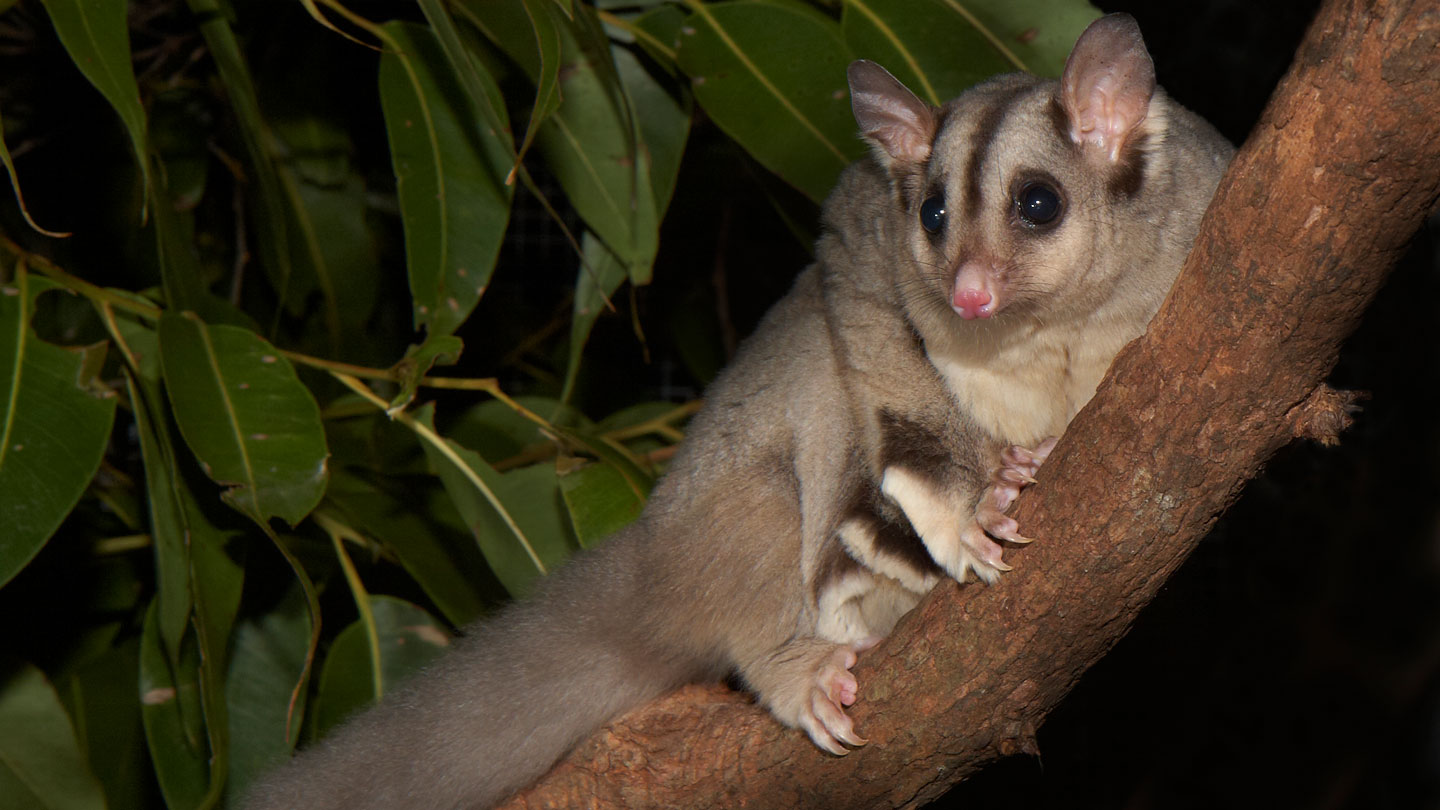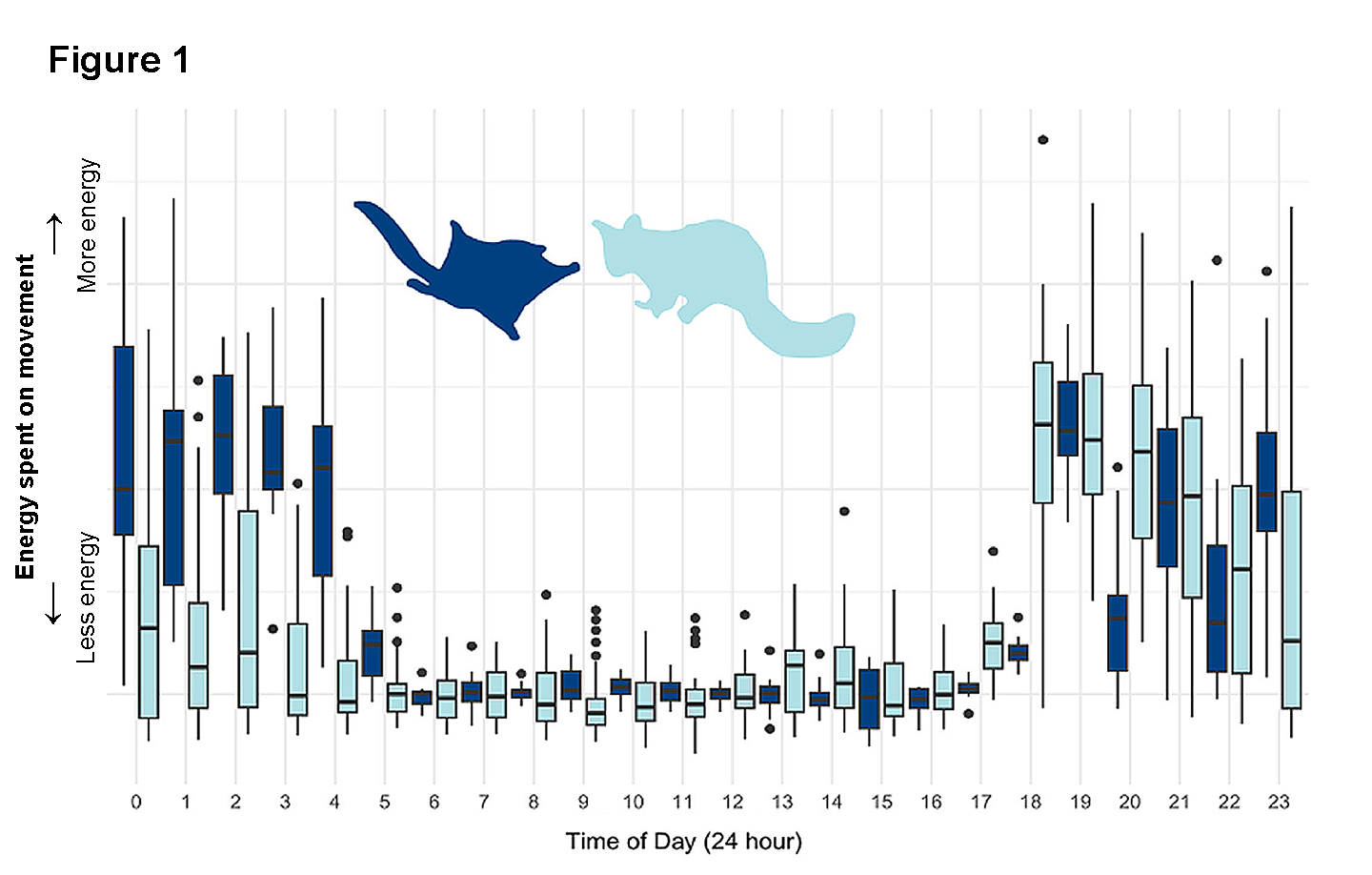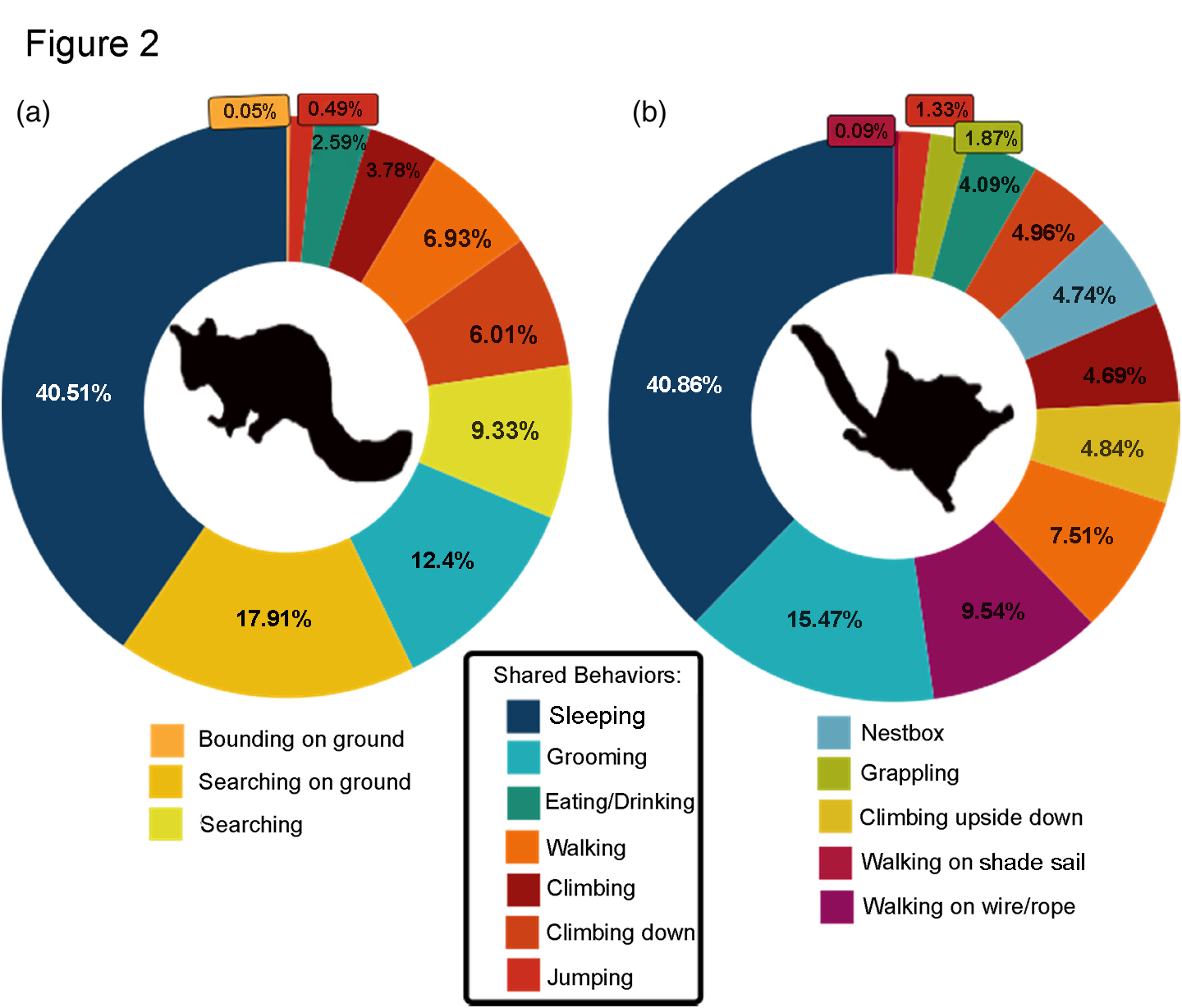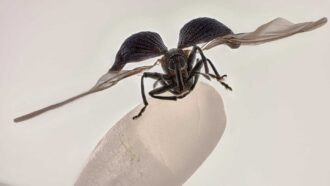Analyze This: Marsupial gliders may avoid the ground to dodge predators
Gliders and possums wearing activity trackers provide hints at why gliding evolved

Mahagony gliders are endangered animals that live in Australia. Researchers don’t yet know why these and some other marsupials evolved to glide. A comparison of mahogany gliders with related but non-gliding animals suggests that gliding helps the animals stay away from ground-based predators.
Bats are the only mammals that fly. But other mammals, such as some squirrels and lemurs, can glide through the air. They do so on membranes that stretch between their limbs. Scientists have wondered why these mammals evolved to sail through the sky. Now, new research hints that some mammals glide to avoid predators on the ground.
In mammals, gliding has evolved at least nine times, says Jasmin Annett. She’s an ecologist at the University of the Sunshine Coast in Sippy Downs, Australia. Among a group of mammals called marsupials, gliding occurs in only one family. This family includes the endangered mahogany glider (Petaurus gracilis). But these nocturnal animals can be tricky to study.
To search for clues about the purpose of gliding, Annett’s team compared the behavior of two captive mahogany gliders with that of four brushtail possums (Trichosurus vulpecula). These bushy-tailed animals are closely related to mahogany gliders. But they don’t glide.
For their research, the scientists caught wild brushtail possums. “If you ever want to trap brushtail possums, use peanut butter sandwiches,” Annett says. “They love them.”
The team outfitted the creatures with collars or cat harnesses bearing motion sensors. These sensors tracked changes in the animals’ speed and direction.
The researchers then matched some observed animal behaviors with the motion data collected during those actions. For instance, their dataset included the motions recorded when climbing, eating or sleeping.
A machine learning algorithm studied these matched sets of behaviors and motion sensor readings. That allowed the algorithm to spot animal behaviors in new movement data. Annett’s group used the algorithm to identify animal behaviors during hundreds of additional hours of sensor data for each species.
On average, mahogany gliders used more energy moving around than brushtail possums did. And their activity levels peaked at different times of day. Mahogany gliders also spent more of their time hanging out in the higher sections of their enclosures.
That suggests that marsupials’ gliding may have evolved to help the creatures steer clear of predators on the ground. The team shared their findings November 28 in the Journal of Zoology.
To better understand activities that set gliders apart, the researchers hope to compare them with other non-gliding marsupials. One might be the ringtail possum, which spends more time in the trees than brushtail possums do.
Data Dive:
- Look at Figure 1. What is the pattern of brushtail possums’ activity across the 24-hour day? Are they diurnal (active during the daytime) or nocturnal (active at night)?
- When were the mahogany gliders most active? How does their activity pattern compare with that of brushtail possums?
- Look at Figure 2. What behaviors did brushtail possums spend the most time doing?
- What behaviors did mahogany gliders spend the most time doing?
- How much time did brushtail possums spend in activities on the ground? How much time did mahogany gliders spend in activities on the ground?
- Another hypothesis for why gliding evolved is that it allows animals to quickly cover large distances. What are some ways the researchers could study this idea?









